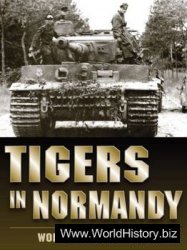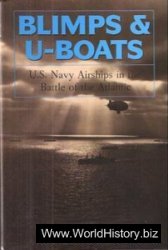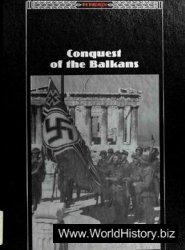Camas Meadows
Joseph and the Nez Perce moved southeast from Big Hole, reaching Camas Meadows in Idaho Territory near the northwest corner of Wyoming Territory by August 19. Howard was close behind but seemed reluctant to attack the Indian village. He believed that the Nez Perce were moving into Yellowstone National Park, and his strategy was to send about 40 soldiers to get ahead of them so he could catch the fleeing Indians between the two forces as they approached the park.
The Nez Perce decided to take the offensive. Approximately 30 of their top warriors, including Ollokot, Looking Glass, and Toohoolhoolzote, moved back to Howard’s camp under cover of night and prepared to attack. Unfortunately for the Nez Perce, one of their warriors fired his gun in the predawn hours of August 20, precipitating frenzied action on both sides.
The Nez Perce attempted to drive off the soldiers’ horses but ended up mainly with their mules instead. A rearguard of warriors fought with the soldiers for several hours, while others drove the mules to the Nez Perce camp. Although less valued than the horses, the mules actually were an important acquisition because they deprived Howard of much of his pack train while offering considerable assistance to the Nez Perce families on their continued migration.
Howard, without his pack mules, fell farther behind Joseph and the Nez Perce, and the soldiers who were to initiate an ambush at the entrance to the park withdrew before their intended quarry arrived. As Howard’s scouts from the Bannock tribe came upon any wounded, elderly, or ill Nez Perce left behind along the trail, they methodically killed them. In the newspapers, meanwhile, the loss of Howard’s mules provided additional grist for stories mocking the general’s seemingly bumbling pursuit of Chief Joseph.
Yellowstone National Park
The Nez Perce entered Yellowstone National Park on August 22. The area had been designated a national park in 1872, and some tourists happened to be visiting the park even as Joseph and his party moved through it.
One group of seven men and two women were enjoying some music in their camp when they were discovered by Nez Perce scouts. Some young warriors wanted to kill them, but the leaders refused. Yellow Horse in his memoir recalled approaching and shaking hands with one of the men, an act that erased his previous violent thoughts. The visitors had heard about the journey of the Nez Perce and asked to see Joseph.
Some young warriors persisted in threatening the nine, even shooting and wounding one of the men before other Nez Perce intervened. Three of the seven men escaped, and Joseph and his wife treated the remaining prisoners well, giving them shelter, food, and blankets. Finally, Poker Joe gave them horses so that they could leave.
Having been rejected by their former allies the Flatheads, the Nez Perce now hoped that they might receive assistance from the Crows, whom they had helped in battles against the Lakotas. Looking Glass went ahead to meet some Crow friends, while Poker Joe continued to lead the group across Yellowstone National Park.
The Nez Perce realized that Howard’s approach was to split his forces, with some soldiers getting ahead of the party and waiting to ambush the Nez Perce. The ideal trap likely would be laid at the end of a canyon, where the Indians could be caught in close quarters. Poker Joe devised a plan to outwit any soldiers who might be waiting ahead. He would lead his people through one canyon but then turn north to another canyon, while a group of warriors rode in circles with the horses and mules. The goal of the warriors was to raise such a large amount of dust that the soldiers would believe the entire group was coming that way.
At this point, approximately 150 of the Nez Perce had died during the journey, and Joseph realized that additional fighting would add greatly to that toll. Kent Nerburn estimates that only 100 able-bodied warriors remained as part of the group.8 Nonetheless, there was little sentiment for surrendering.
Waiting at what turned out to be the wrong canyon was Colonel Samuel Sturgis. Colonel Nelson Miles, commander of the District of the Yellowstone, had ordered Sturgis to try to prevent Joseph, whom Miles also viewed as the leader of the Nez Perce, from joining forces with Sitting Bull. Sitting Bull had been demonized by the U. S. military and the press as the conqueror of Colonel Custer at Little Bighorn and was viewed as a constant threat to descend from Canada and resume fighting. Sturgis was determined to blockade the Nez Perce in Yellowstone, although he was uncertain as to which route they would be taking. He arrived at Clark’s Fork Canyon on September 5. Upon being told that the route through the canyon was impassable, he moved on September 8 to the Stinking Water Canyon, so-called because of the sulfur beds nearby.
Apparently contributing to Sturgis’s decision was intelligence he received regarding dust clouds being sighted in the vicinity of Stinking Water. The clouds, however, were Poker Joe’s diversion created by the horses and mules. About the time that Sturgis departed Clark’s Fork, the main body of Indians passed safely through the canyon. The good news of this successful stratagem
Was tempered by the return of Looking Glass, who had failed to enlist Crow support. The Crows did not want to antagonize the U. S. soldiers; in fact, some Crows already were scouting for the soldiers.
Having been betrayed by both the Flatheads and the Crows, the Nez Perce now pinned their hopes on reaching Canada. Their only chance to avoid either surrendering or being annihilated in combat appeared to lie with Sitting Bull. The Nez Perce and Lakotas had once been enemies, but they had since made peace. Perhaps, they thought, the Lakotas would offer the support and security that the Flatheads and Crows had refused.
Nelson Miles
General Howard sent 50 of his own men with Colonel Sturgis’s command in pursuit of Joseph and the Nez Perce while he followed more slowly, allowing his tired soldiers to recover from the already long trek. Sturgis was determined to catch up with Joseph. In addition to having been outmaneuvered by the Nez Perce, Sturgis could not forget the death of his son, Second Lieutenant James Sturgis, who had fallen at Little Bighorn. The younger Sturgis’s body had been so badly mutilated by the victors that he had been identified only by the bloody underwear he was wearing.
On September 13, the Nez Perce camped along Canyon Creek near the Yellowstone River, a few miles south of where Clark’s Fork met the Yellowstone. They knew that Howard was far behind but were unaware that Sturgis was close. Some young warriors discovered a stagecoach, set the building near it on fire, and drove the stage back toward their camp. Sturgis’s scouts saw smoke rising from the burning building and located in the distance the main body of Nez Perce.
At this point, the Nez Perce also saw Sturgis’s men and hurried to move through the canyon. Joseph tried to keep both the people and the horses in order and leave no one behind while the party moved as fast as possible. Hoping to safeguard the women and children, warriors rode their horses to the top of a mesa in the canyon and prepared to fire down on the soldiers.
As Sturgis’s command approached, the Nez Perce fired, shooting soldiers off their horses. The cavalry dismounted and formed a skirmish line. A rearguard body of warriors slowed down the soldiers while other warriors caught up with the main body of Nez Perce. Another group of cavalry attempted to ride along a bluff to reach the canyon mouth before the Nez Perce could escape, but to no avail. Sturgis recalled his men and halted.
Sturgis’s losses included 3 dead and 11 wounded at what has usually been called the Battle of Canyon Creek, although historians usually acknowledge that it was more of a skirmish than a battle. Sturgis claimed that 21 Nez Perce were killed, a claim that Elliott West labels “a ridiculous inflation that his [Sturgis’s] own scout rejected.” West similarly debunks the colonel’s claim to have captured between 900 and 1,000 ponies, noting that the only horses claimed by Sturgis were some worn-out ones left behind by the Nez Perce.9
For several days, though, the Nez Perce had to contend with raids by Crows and Bannocks, who stole horses and, according to Yellow Wolf, killed three Nez Perce.
Howard and Sturgis now were both far behind, but the Nez Perce did not realize that another military force was about to enter the picture. Believing that the primary threat was in the rear, they thought that they needed to move only fast enough to keep Howard and Sturgis at a distance. Moving slowly at times, therefore, became a useful tactic for Howard because he realized that it would induce the Nez Perce to slow down, leaving Colonel Miles to get in place to stop Joseph. As Howard wrote in his memoirs, My Life and Personal Experiences Among Our Hostile Indians, “My only hope of striking the Indians lay in apprising Colonel Miles... of the situation, and asking him to make a diagonal march across our front and take Joseph unawares.” Consequently, Howard added, “Sturgis and I slowed our marches for fear of causing the Indians to hasten too rapidly... .”10
At this point, Colonel Miles was moving to cut off Joseph. Miles’s primary concern had been, and remained, Sitting Bull. However, he now considered the real possibility that Joseph, whom Miles considered to be a lesser threat, might reach Canada and join forces with the Lakota leader—an alliance that Miles believed could have disastrous consequences.
By early in the morning of September 18, only hours after hearing from Howard regarding Joseph’s continued progress, Miles had his force of about 500 men (six companies each of cavalry and mounted infantry), along with wagons, artillery, and a pack train, ready to move northwest from the Tongue River cantonment in Montana.
Cow Island
As Joseph continued to oversee the welfare of the Nez Perce, especially the young and elderly, and help keep the whole party functioning as efficiently as possible, the group prepared to cross the Missouri River at the traditional Nez Perce crossing point on their buffalo hunts: Cow Island. The river was usually shallow enough there to cross on foot, and several small tree-covered islands provided shade.
The crossing also was popular with Euro-Americans. When the Nez Perce reached it on September 23, they found soldiers guarding a large pile of goods on the north bank of the river deposited by a train of 15 wagons that was making its way from the river toward the plains. The Nez Perce crossed the Missouri farther upriver and started up Cow Creek, a tributary of the Missouri.
A delegation of Nez Perce led probably by Poker Joe asked Sergeant William Moelchert for some supplies. Rebuffed, they then offered to buy supplies. Finally, Moelchert handed over a side of bacon and a sack of hardtack. Angered by the perceived lack of generosity, a group of young warriors started firing at the soldiers. The supplies were stacked between the soldiers’ trenches and the Nez Perce, so while firing kept the soldiers pinned down, the Indian
Women ran back and forth to the supplies, carrying off a variety of foodstuffs as well as pans and other household goods. The food provided a welcome dinner for the hungry Nez Perce.
The following morning the Nez Perce began to move away from the river. In the afternoon they found the bull train from Cow Island. With his people much in need of ammunition, Poker Joe tried to obtain additional supplies yet prevent a battle. He informed the drivers that he had recently seen a band of Sioux and suggested that the drivers leave the wagons and hide. The sighting was not true, but the drivers could not be sure, and the idea of facing two large groups of potentially hostile Indians was frightening. Even so, it took a direct attack by some of the warriors the following morning, September 25, which killed one of the drivers, to send the rest fleeing. The subsequent confiscation of goods from the wagons went on successfully despite the approach of a small contingent of volunteers under Major Guido Ilges, who ultimately chose not to take on the much larger group of Nez Perce directly. When he tried to lure the Nez Perce into an ambush, warriors climbed surrounding hills and fired down on Ilges’s men, killing one. After a few hours, the Nez Perce withdrew, leaving Ilges to return to Cow Island.
Two days earlier, on September 23, Miles had approached within 6 miles of the Missouri River in preparation for a crossing. The next morning, Miles learned that the Nez Perce had crossed the Missouri at Cow Island, 40 miles west of Miles’s position. Managing to recall a steamboat that had passed not long before, Miles arranged to have those of his men who had not previously crossed ferried across the river.
A Fateful Decision
With the Nez Perce having outpaced Howard and with seemingly only prairie land between them and Canada, sentiment turned against Poker Joe’s hard driving. Looking Glass believed that it was time to slow down and permit the tired to rest. Many agreed with him. In a fateful decision, leadership was returned to Looking Glass, whose foresight would be no better now than at Big Hole. This time, complacency would prove disastrous.
Many Wounds later recalled the exchange between Looking Glass and Poker Joe. Poker Joe accepted the change but issued a prescient warning. “All right, Looking Glass,” he said, “you can lead. I am trying to save the people, doing my best to cross into Canada before the soldiers find us. You can take command, but I think we will be caught and killed.”11
Looking Glass, of course, did not know that Miles was moving rapidly to cut off the Nez Perce. Miles’s intelligence was good enough to ascertain the speed with which his quarry was moving, and he was confident that he could intercept Joseph’s band so long as the group did not increase its speed—which it would do if Nez Perce scouts discovered Miles’s men. For this reason, Miles tried to maintain invisibility by keeping a mountain range known as the Little Rockies between him and the Nez Perce until he was close enough to attack.




 World History
World History









